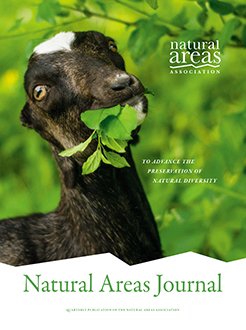The use of goat browsing for invasive plant management is growing in the United States, but many questions remain about the efficacy of goat browsing for invasive plant control. One common concern of land managers and other stakeholders is whether goats can spread invasive plants through endozoochory (seed dispersal via ingestion and excretion in feces). We evaluated this possibility using common buckthorn (Rhamnus cathartica), an invasive shrub for which goats are often employed as a control method. Goats were fed buckthorn berries, and their feces were collected and examined at 24 hr, 48 hr, and 72 hr post-ingestion for intact seeds that survived gut passage. A low proportion of buckthorn seeds (2%) made it through the goat digestive system intact. Of these, only 11% remained viable, compared to 63% viability of control seeds. We conclude that consumption of buckthorn fruits by goats effectively destroys seeds, indicating low risk of dispersal via gut passage. To put these results in context, and provide more guidance for land managers, we additionally reviewed literature investigating seed recovery following ingestion by goats. Based on a synthetic analysis across 28 plant species, we found that seeds >4 mm long were unlikely to be recovered from feces intact, while smaller seeds posed higher dispersal risk.
How to translate text using browser tools
6 April 2020
Goat Digestion Leads to Low Survival and Viability of Common Buckthorn (Rhamnus cathartica) Seeds
Katherine M. Marchetto,
D. Jo Heuschele,
Daniel J. Larkin,
Tiffany M. Wolf
ACCESS THE FULL ARTICLE

Natural Areas Journal
Vol. 40 • No. 2
April 2020
Vol. 40 • No. 2
April 2020
browsing management
endozoochory
gut passage
Invasive plant management
ruminants
seed viability




